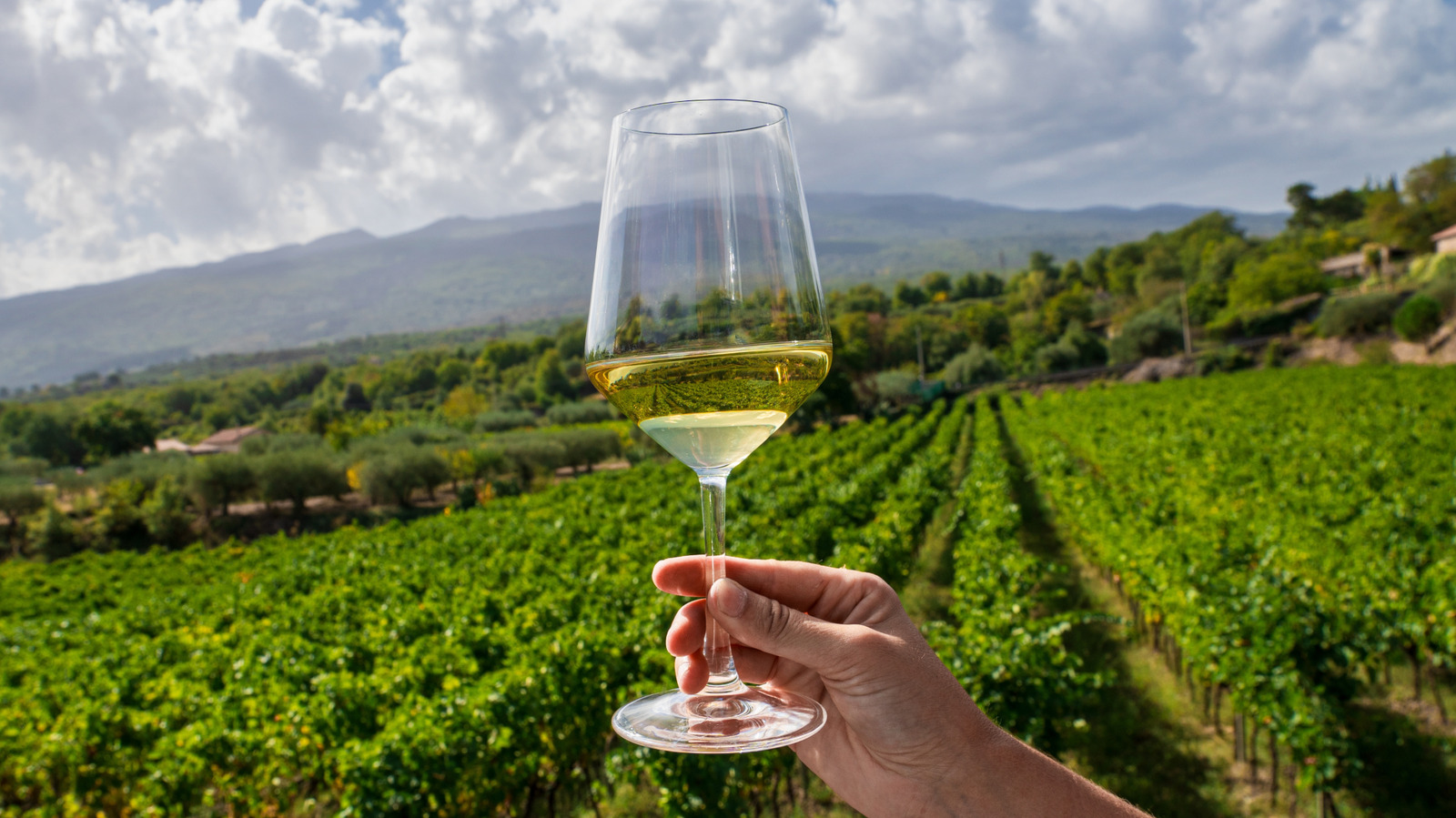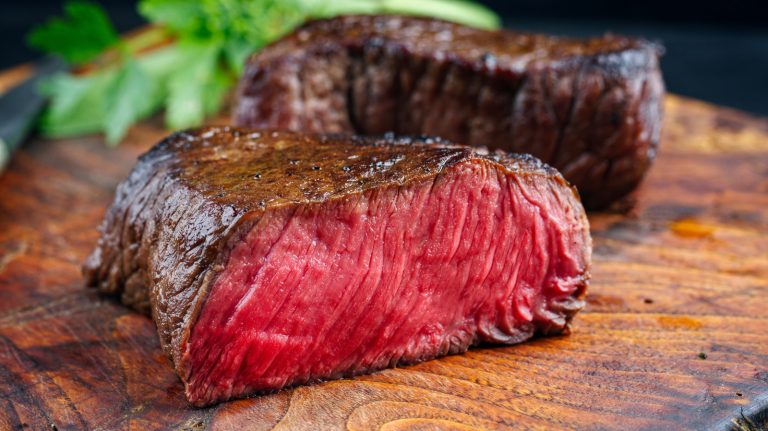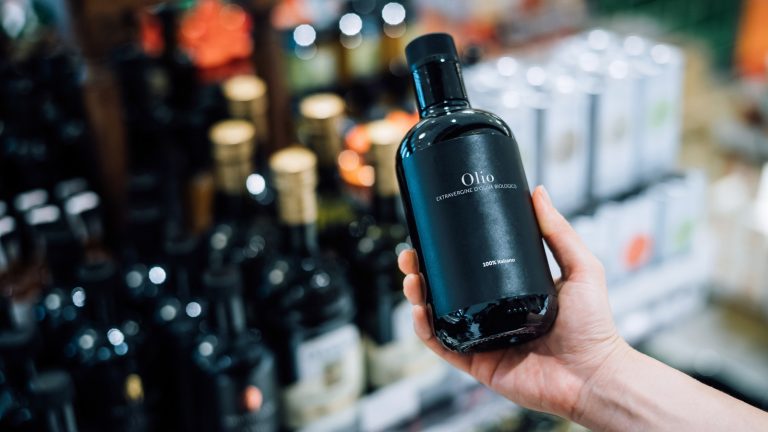The world’s most well-known wine regions — like Burgundy in France, Napa Valley in California, and Tuscany in Italy — are popular for several reasons. First and foremost, they’re home to some seriously stellar wines. They can also be picturesque and well set up for wine tourism. However, they can also be crowded, particularly during peak travel seasons, and their popularity often comes with steep prices. If you’re looking for something a bit more low-key, there are plenty of lesser-known wine regions around the world that deliver spectacular wines in equally beautiful settings.
To find out which underrated wine regions are truly worth your attention, we asked people who spend their days tasting and talking about wine: sommeliers, wine directors, and wine consultants. They stay tuned in to what’s emerging and exciting, and they often spot trends before they hit the mainstream. They pointed us toward regions that are producing standout bottles without the crowds or price tags of more famous locales. These are their top picks for wine regions that are often overlooked, but should be on any wine lover’s radar.
1. Sicily, Italy
As the executive director of wine for MGM Resorts International, Douglas Kim knows a thing or two about great bottles. When we asked him which wine regions deserve more international attention, he told us that Sicily, and particularly the Etna Rosso DOC, is starting to come into the spotlight. Sicily has a long history of winemaking that stretches back to 4,000 B.C. There are 23 Denominazione di Origine Controllata (DOC) wine appellations on the island, but the Etna DOC is one of the most unique because the wines are made with grapes grown on the slopes of Mount Etna, an active volcano.
Etna Rosso is a red wine made with two types of grapes: Nerello Mascalese and Nerello Mantellato (aka Nerello Cappuccio). It’s typically bold, balanced, and fruity with berry notes. Kim told us that Etna Rosso makes for a unique alternative to pinot noir and Nebbiolo. He said, “These wines are extremely versatile — enjoyable on their own or paired with food — and the volcanic soils impart a beautiful smoky minerality that adds great character.” Kim recommends producers like Tenuta delle Terre Nere, Benanti, and Tornatore.
2. Victoria, Australia
Australia is a pretty big player on the international wine scene. In 2024 alone, the country exported 647 million liters of wine abroad. Much of the Australian wine you find outside the country comes from just a few regions, but that’s starting to change. Winn Roberton, the head sommelier at Bourbon Steak in the Four Seasons Hotel in Washington, D.C. told us, “For decades, [Australia] was known for extremely fruit-forward, powerful, oak-driven Shiraz and blends from Barossa and other neighboring areas. Now, however, winegrowers are finding unique spots for lighter wines with more lift and finesse.”
One region that’s gaining a great deal of interest among oenophiles is Victoria, a state in southeastern Australia that’s home to 21 distinctive wine regions. Roberton pointed to the Yarra Valley as producing some stunning pinot noirs and chardonnays. Douglas Kim told us he recently had the opportunity to sample sweet muscats from Rutherglen and was blown away by the complexity of the wines. Other regions to watch include Gippsland and Mornington Peninsula for their exceptional chardonnays.
3. Yamanashi Prefecture, Japan
Japan may be best known for its sake and award-winning whiskies, but the country’s wines are also starting to gain global attention. Megumi Calver is a Tokyo-born sommelier and founder of wine media events company Merobebe. Over the years, she’s watched Japan’s wine industry evolve, particularly in Yamanashi Prefecture. The mountainous prefecture overlooks the northern slopes of Mount Fuji and it’s the volcanic soil and cool breezes that help produce what Calver describes as “incredibly nuanced, low-alcohol wines with high acidity and subtle salinity,”
There are over 80 wineries in Yamanashi, most of which produce white wines made with Koshu grapes, which are native to Japan. Calver told us, “Koshu wine from Yamanashi is a proudly Japanese wine that’s not trying to mimic a Western template. There’s a subtle citrus note with white tea and a saline minerality that makes it perfect with sashimi, tempura, or raw oysters.” If you can’t get your hands on a bottle from Japan, look for Kazumi Wines out of Napa Valley. It was the first brand to plant Koshu grapes and produce wine with them in the United States.
4. Pico Island, Portugal
Kaori Yoshioka is the sommelier and restaurant manager at SHINGO, a Japanese restaurant in Miami that specializes in omakase-style meals. For her, some of the most underrated wines come from lesser-known regions in Portugal. She was clear to point out that Portuguese wine isn’t only Port. “Even if it is a small country, Portugal has a long history of wine making, many native grape varieties, a wide variety of climates, and different soils which are all connected to their wine making,” she said.
Yoshioka told us that she recently had the opportunity to try a white wine from Pico Island in Portugal’s Azores archipelago and she was thoroughly impressed. The volcanic island has been a center of winemaking since the 15th century. Today, the ancient stone walls that protect the grape vines from strong, salty ocean breezes are UNESCO World Heritage sites. Many of the white wines produced on Pico Island feature Arinto dos Açores grapes. Yoshioka described the wine has having a natural minerality and salinity that she said pairs amazingly well with seafood.
5. Caucasus region, Georgia
While Georgia (the country) may not be the first place that comes to mind when you think of wine, many of the experts we spoke to said it probably should be. Nestled in the Greater Caucasus Mountains, Georgia is widely considered the birthplace of wine, with evidence of winemaking dating back 8,000 years. Douglas Kim told us, “Georgia offers a fantastic wine tourism experience with beautiful estates, deep history, and a wealth of indigenous grape varieties, all produced with both traditional and modern winemaking approaches.”
One ancient technique that is still used in Georgia today is fermenting and aging the wine in large clay vessels called qvevri that are buried underground. All parts of the grapes — including the skin, stems, and seeds — are added to the qveri along with the pressed juice. This results in bold, earthy reds and white wines with a slight orange hue. Those amber wines (aka orange wines) have gained international attention in recent years, inspiring winemakers beyond Georgia and showing up on more wine lists. They’re popular at wine-centric restaurants, where they’re often paired with bold, savory foods.
6. Touraine, France
David Orellana is the beverage director at Grand Brasserie, an opulent French restaurant in New York City that’s styled like a Parisian brasserie. Not surprisingly, Orellana is a huge fan of French wines, particularly sauvignon blanc. He explained that the grape varietal grows particularly well in the Loire Valley thanks to the cool breezes that roll in from the Atlantic Ocean. Sancerre may be its most famous AOC appellation, but Orellana believes that Touraine is a vastly underrated region that produces some excellent sauvignon blancs.
Located in the Loire Valley halfway between Sancerre and Nantes, Touraine has approximately 12,350 acres of vineyards, a large majority of which grow sauvignon blanc grapes. “I love Touraine wines because of its very diverse terroir that includes limestone, flinty clay, sand, or gravel,” Orellana said. “And with nearly 150 wine-producing villages, there are many expressions to be explored.” He told us that sauvignon blanc from Touraine tends to be rich, fruity, and highly aromatic with some expressions offering a more “New World” tasting profile depending on the terroir and producer.
7. Santorini, Greece
If you’re looking for helpful tips to save you money on wine, Joe Mele is a good person to turn to. He and his wife Carmela host The Wine Pair Podcast, where they review reasonably priced wines from around the world. They often delve into underrated wine regions, and one that Mele believes offers exceptionally good wines is Santorini in Greece. The island is known for its white wines made with native Assyrtiko grapes. Interestingly, the vines are trained to grow in circles low on the ground to protect them from wind and sea spray.
Mele says there are several reasons Assyrtiko wine is set to take off. “First of all, it is a beautiful white wine, and depending on how it is made, can compare well to a Sauvignon Blanc or a Chablis,” he said. He explained that it has a pleasant medium mouthfeel and a nice acidity that makes it a great pairing for a wide array of foods. “It really shines when paired with seafood and shellfish, as well as white meats like chicken, Mediterranean dishes (obviously), and spicy foods like Thai or Indian,” he said.
8. Tupungato in Valle de Uco, Argentina
Michelle Richards is the wine director, sommelier, and general manager at Allelo, a Wine Spectator award-winning restaurant in St. Petersburg, Florida. She has over a decade of experience pairing exceptional wines with elevated cuisine. When it comes to a wine region that she thinks deserves more hype, Tupungato is at the top of her list. Situated along the foothills of the Andes in the Valle de Uco of northern Argentina, the region has some of the highest elevation vineyards in the country and produces a wide variety of top-notch wines.
Richards explained that grapes like Sémillon, albariño, cabernet franc, and bonarda thrive in Tupungato. The region is also renowned for its malbec. The intense sunlight and cool nights allows the grapes to maintain their acidity, while also developing rich flavors. In addition, the rocky, alluvial soil causes the grapes to firm up, which adds to their concentrated character. “What makes them so exciting is how different they are from the bold, fruit-forward Argentine wines people expect,” said Richards. “These wines are lighter-bodies and have incredible finesse.”
9. Maldonado region, Uruguay
South America has become a powerhouse in New World wine, with Argentina and Chile earning global acclaim. But according to Annie Edgerton, sommelier and wine and spirits appraiser at Flatiron Wines & Spirits New York City, Uruguay is the next country to watch. She told us, “Many savvy wineaux are familiar with what leading producer Garzón has been doing, and have heard of their tannat and albariño, but there are dozens of smaller, artisanal producers who are making incredible wines from a wide array of varieties.”
Many of those producers have set up camp in Maldonado, a coastal region that is fast becoming Uruguay’s most happening wine region. The temperate climate, mineral-rich soils, and cool ocean breezes are perfect for growing varietals like tannat, cabernet franc, pinot noir, malbec, albariño, and sauvignon blanc. This is where the renowned Garzón winery is, a massive estate that spans 240 hectares. There are also several smaller wineries in Maldonado that are producing some intriguing wines, including reds, whites, rosés, and sparkling wines.
10. Abruzzo, Italy
There’s no disputing that Italy produces some pretty incredible wines. However, some regions tend to get overshadowed by the bigger players. For Marino Cardelli, a certified sommelier and founder of Experience BellaVita, a boutique tour operator specializing in cultural culinary and wine experiences in Italy, Abruzzo falls into that category. He told us, “The region offers a compelling combination of altitude, sea breezes, and indigenous grapes, all deeply tied to tradition. And yet, it continues to fly under the radar compared to nearby Tuscany and Piedmont.”
Located in central Italy, Abruzzo features mountains that spill down to the Adriatic Sea. The diverse landscapes and climates provide the ideal environments to grow several types of grapes, but the main ones are Montepulciano and trebbiano. Cardelli is particularly fond of a wine called cerasuolo d’Abruzzo, which is a robust rosato made entirely from Montepulciano grapes. He calls it the “sommelier saver,” because it pairs beautifully with a wide range of foods. It’s vibrant, fruity, and a bright cherry color, hence the name cerasuolo, which means “cherry” in Italian.
11. Steiermark, Austria
To say that sommelier and wine consultant Jonathan Kleeman knows his wine would be an understatement. He’s regarded as one of the top 10 sommeliers in the U.K. and among the top 50 sommeliers in the world. His first pick for a region that’s often overlooked is Steiermark in Austria. He told us, “Within the more cultish corners of the wine world, Steiermark does get a bit of love. But on a broader scale? Nowhere near the recognition it deserves, especially considering the quality coming out of there.”
It’s the white wines that make Steiermark stand out for Kleeman, particularly the sauvignon blanc, which he says has a beautiful texture and structure. “It’s not your usual zippy, underripe style,” he said. “It’s richer, more rounded, and just has more going on.” He attributes this to the fact that the winemakers let the grapes ripen longer than usual. He also told us that there are some brilliant rieslings and chardonnays coming out of the region. In addition, Steiermark is also a prime wine tourism destination with family-run farms making their own wine and food and serving it all on site.
12. Fruška Gora, Serbia
Jonathan Kleeman’s second pick for an underrated wine region that more people should know about is the mountain of Fruška Gora in Serbia. “It’s not exactly a well-trodden destination yet, though there are some cracking wineries worth visiting if you make the trip,” he said. The area is steeped in winemaking history with legends stating that Roman emperor Marcus Aurelius Probus ordered vines to be planted there. Today, it’s a prime spot for growing grape varieties like pinot noir, cabernet sauvignon, chardonnay, and riesling.
Kleeman told us, “The hill itself used to be part of an ancient seabed, and you can still taste that history in the wines. There’s this beautiful saline quality, almost a sea breeze character that runs through everything grown there.” He also noted that the way the hill is positioned makes for big swings in temperature between day and night, and that builds tension in the grapes and allows them to hold their acidity. Combine that with the natural saltiness from the soil, and you get wines that are incredibly food friendly.
13. Virginia, United States
When most people think of great wines from the United States, their thoughts immediately go to Napa Valley. However, there are several underrated wine regions in the U.S. that are producing some exceptional wines. For Winn Robertson, Virginia is a region that’s set to make waves on the global stage. He said, “Its modern wine history is less than 50 years old, and experimentation is still ongoing, but there are now bona fide vineyard areas and producers bottling wines that have stood up to some of their most revered counterparts from around the world.”
Virginia’s wine industry is growing fast with vineyards covering over 4,000 acres and 10 distinct wine regions. Winemakers are planting a wide variety of grapes that thrive in the lush valleys and hills. Grape varieties include everything from cabernet franc to merlot, petite verdot, chardonnay, viognier, and Norton (a variety native to Virginia). Robertson also touched on the fact that winemakers are fine-tuning the wines with different barrel usage and techniques like tannin-managing yeast strains to elevate the wines to a new level.
14. Nagano, Japan
While Yamanashi may be the birthplace of winemaking in Japan, Megumi Calver told us that Nagano is another region that’s quietly gaining ground. Known for its mountainous terrain, the prefecture offers high altitude, cool temperatures, and well-draining soil that’s perfect for growing a wide variety of grapes. She said, “It’s a region that’s coming into its own with both hybrid and European varietals. If Yamanashi is Japan’s Napa, Nagano is its Burgundy: more artisanal, more experimental, and super terroir-driven.”
There are several vineyards and wineries scattered across Nagano’s valleys and hillsides, and many wineries offer tours and have tasting rooms and restaurants. Some are newer operations focused on sustainability and low-intervention winemaking, while others have been around since the early 1900s. Depending on which wineries you visit, you can try bold, fruity reds like merlot, cabernet sauvignon, and pinot noir, as well as fresh and lively whites like sauvignon blanc, chardonnay, and pinot gris. Some bottles have racked up awards at national wine competitions, and many more are gaining international attention. As Calver said, “Nagano is going to be the next breakout star.”
15. Snake River Valley, Idaho, United States
Paige Comrie of Wine by Paige is a wine writer and educator based in Napa. As a certified American Wine Specialist, she has her finger on the pulse of what’s new and exciting in the world of winemaking in the U.S. When we asked her if there were any regions that she thinks are hidden gems, she told us, “This one surprises people, but Idaho’s Snake River Valley is quietly producing some stunning wines, especially crisp, mineral-driven rieslings, floral viogniers, and vibrant tempranillos.”
With its high desert environment, the Snake River Valley offers optimal conditions for growing grapes. The warm days and cool nights keep the sugars in check and maintain the acidity. In addition, the mineral-rich soil enhances the flavor of the wines. It’s a relatively new region with winemaking only dating back to the 1970s, and it was only approved as an American Viticultural Area (AVA) in 2007. However, Comrie believes the potential is huge. “And the prices are refreshingly affordable for the quality,” she said.





